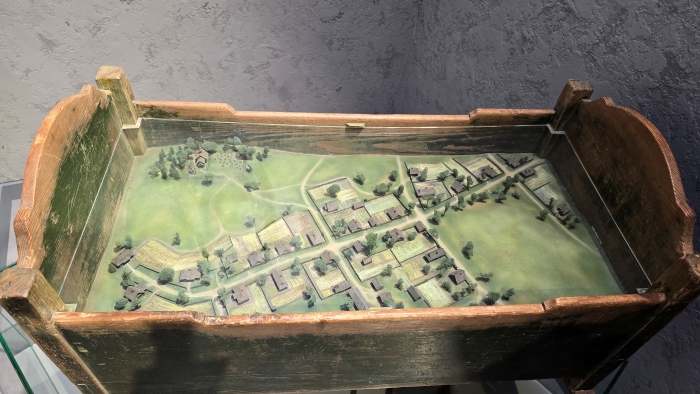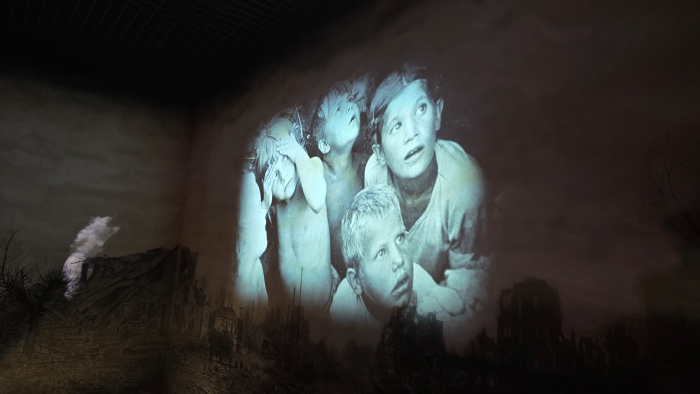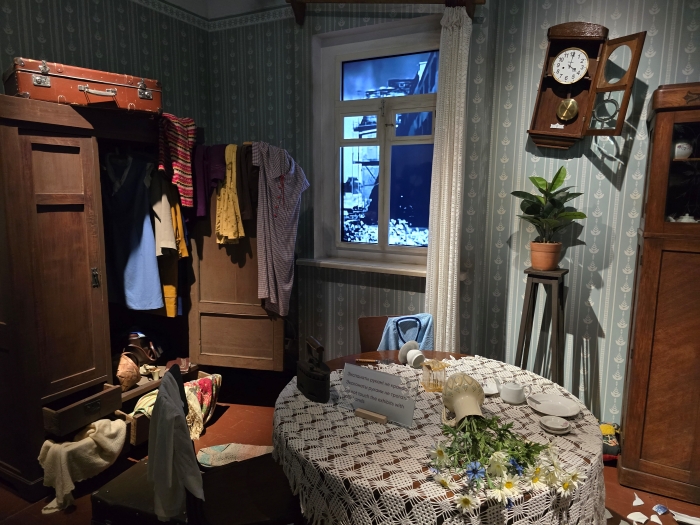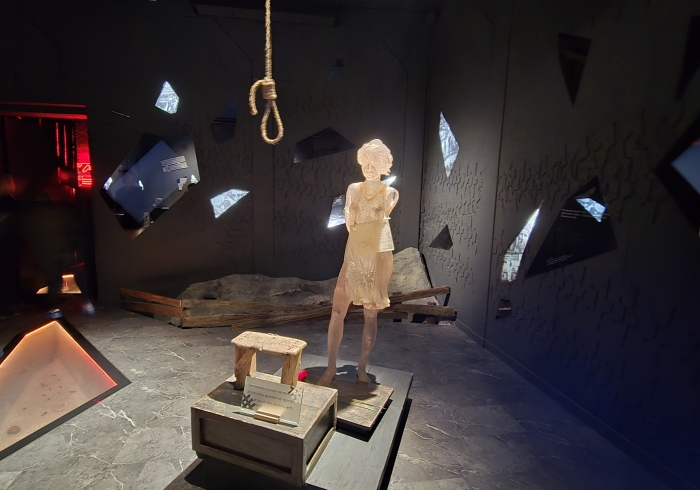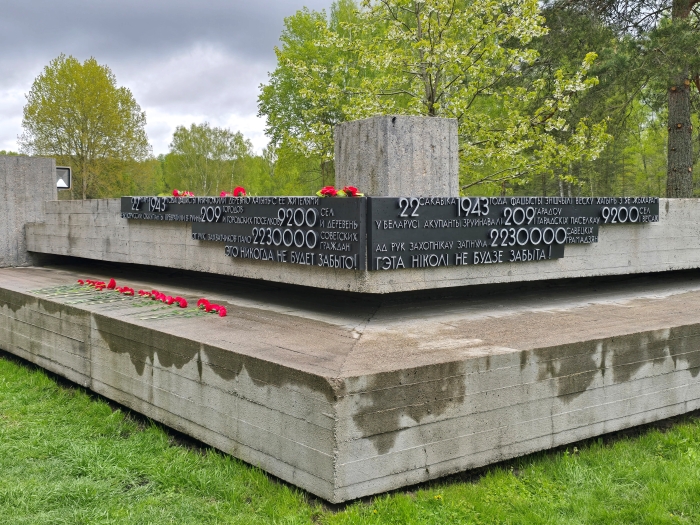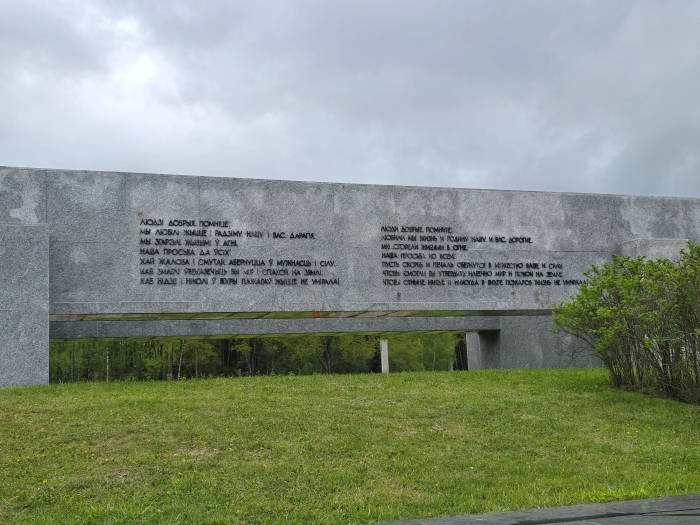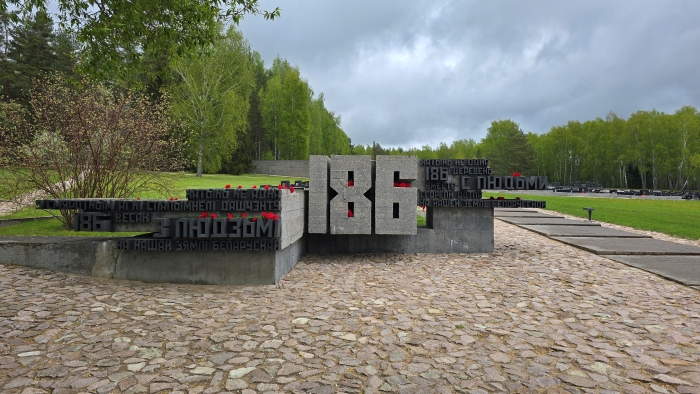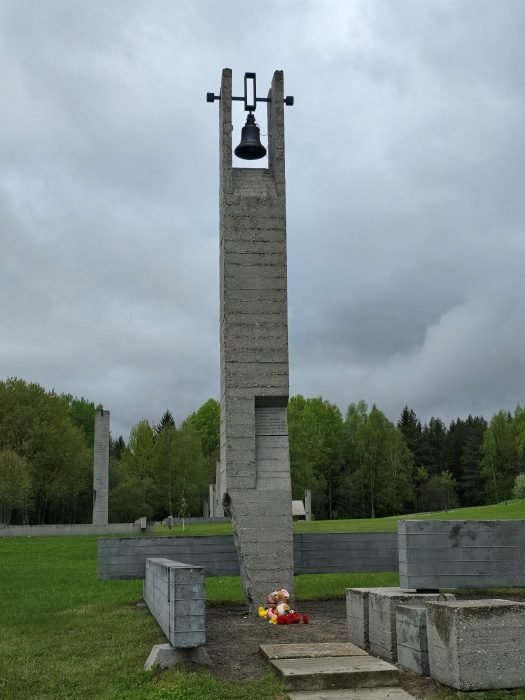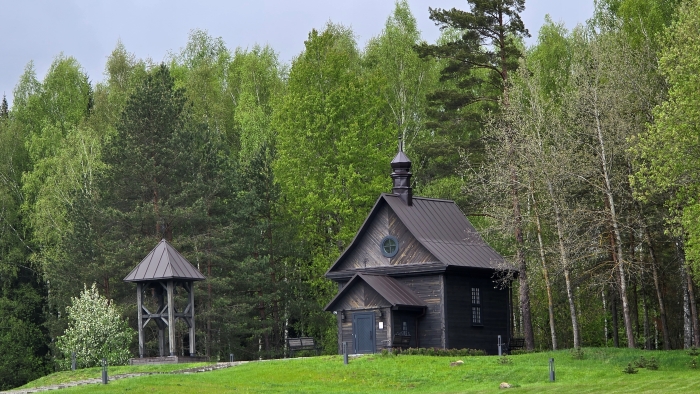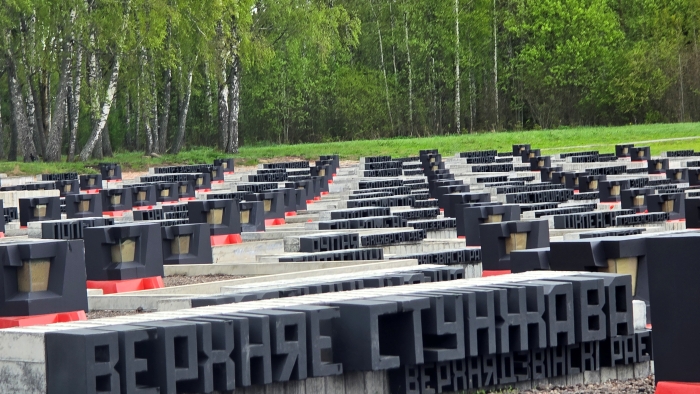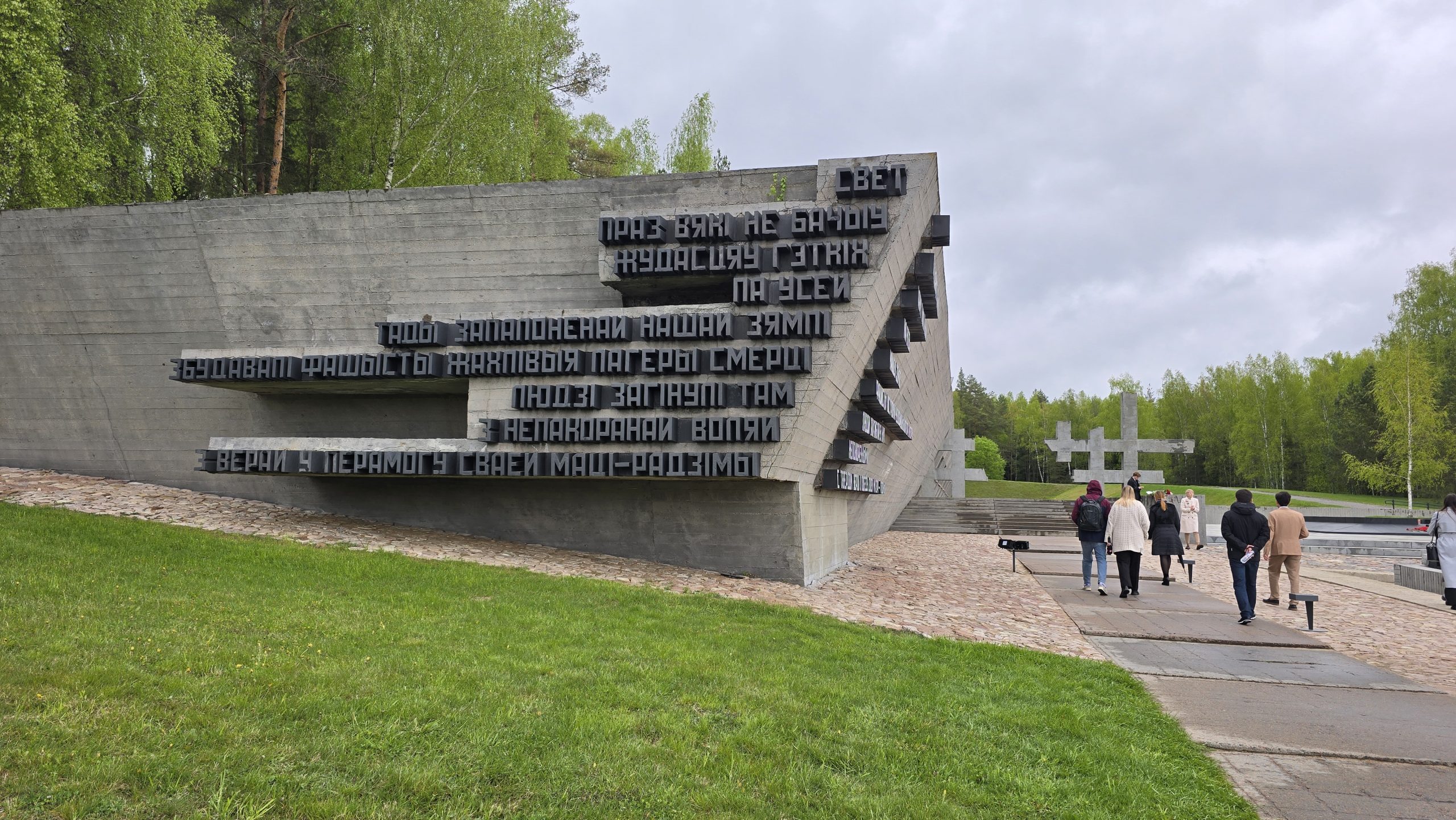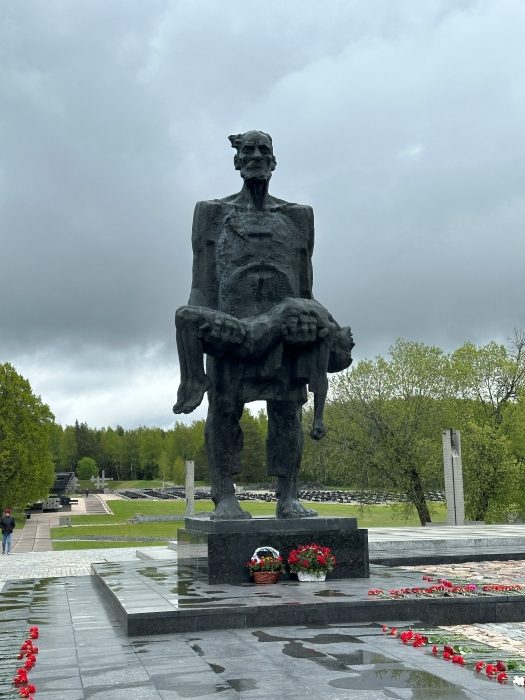Elvira Kadyrova, Minsk, Belarus, 5 May 2025
A mournful silence, pierced by the tolling of bells, echoing pain deep within the consciousness… These are the first sensations that stir in the soul as you step onto the cobblestone paths of the Khatyn State Memorial Complex, located a few dozen kilometers from Minsk, amidst the vast Belarusian forests.
The Khatyn State Memorial Complex was one of the first stops on a press tour for journalists from the EAEU and CIS countries to Belarus’s memorial sites, organized for the first time by the Ministry of Information in collaboration with the Ministry of Foreign Affairs and supported by the Prosecutor General’s Office of Belarus.
Khatyn is a symbol of tragedy, courage, and memory. Despite its monumental scale, Khatyn is a space where every detail allows you to hear the echo of the horrific events of the Great Patriotic War.
On 22 March 1943, the village of Khatyn was wiped off the face of the earth by the Nazis. One hundred forty-nine residents, including seventy-five children, were burned alive or shot by the 118th Schutzmannschaft Battalion and the SS “Dirlewanger” unit.
Located within the complex is a museum whose exhibition, consisting of six halls, meticulously recounts the tragic events of the occupation and destruction of the village of Khatyn.
First Hall: “The Millstones of History”
From the very first steps, visitors are immersed in an atmosphere where the past comes alive. This hall introduces the history of military conflicts from the 16th to the 20th centuries, revealed through unique exhibits. “Living” miniatures from the Radziwill Chronicle and ancient engravings depict fragments of historical events, allowing visitors to feel how wars, like millstones, ground the fates of people across centuries.
Second Hall: “The Outbreak of War”. This hall transfers visitors to 1941, to the first days of the Great Patriotic War in Belarus. The details of everyday life from that time—household items, sounds, and images—are recreated with striking authenticity. The war caught people off guard, blending confusion, fear, and hope in the air.
Third Hall: “Occupation” and Fourth Hall: “The Burning of the Village”
These halls mark the culmination of Khatyn’s tragedy. Their titles speak for themselves. The third hall plunges visitors into the darkness of the occupation, showcasing the cruelty and hopelessness of life for the local population under the Nazi yoke. The fourth hall reconstructs the most horrific day in the village’s history. The story of the village’s destruction is told through the image of a boy, brought to life using laser effects.
Fifth Hall: “Eternity”
From the blazing inferno of the fourth hall, visitors step into a space of light and silence. The world seems to pause, and even the bells of Khatyn fall silent. This hall symbolizes the end of the war and the rebirth of life. The peaceful sky and fields of ripening grain emerge after the tragedy, yet the memory remains alive. From time to time, the silence is broken by the tolling of a bell, reminding us: “Remember. Remember and never forget…” This hall teaches visitors to value peace and recognize the cost at which it was achieved.
Sixth Hall: “Memory” The final hall is dedicated to reflecting on the tragedy of Khatyn. It houses commemorative objects, historical relics, and archival documents that visitors can explore independently.
The memorial ensemble “Khatyn” (https://www.khatyn.by/en/ ), opened in 1969, was created by architects Yuri Gradov, Valentin Zankovich, Leonid Levin, and sculptor Sergei Selikhanov. The mastery of the complex’s creators deserves recognition—in the simplicity and minimalism of the memorial lies a vast landscape of symbolism and elements narrating the horrific events.
Concrete became the primary material, emphasizing the severity and uncompromising nature of memory.
Every element of the complex is meticulously thought out: the ringing bells placed at the sites of burned villages; the bronze statue “The Unconquered Man,” holding a dead child in his arms; symbolic chimney stacks inscribed with the names and numbers of the deceased—all paint a cohesive, profound, and still relevant picture of a tragedy not only of a single nation but of the world.
At the sites of burned houses, concrete wreaths with obelisks resembling chimney stacks stand as symbols of destroyed hearths.
Open gates in front of each “house” symbolize the hospitality of the residents.
The complex includes a cemetery of villages, with 185 symbolic graves honoring the burned villages of Belarus. Khatyn is the 186th, its memory immortalized in the central monument shaped like a flame rising from a symbolic bonfire.
However, no fewer than 288 villages suffered the same fate as Khatyn.
The “Trees of Life” installation lists 433 villages that were destroyed but later rebuilt, their names engraved on metal branches—a hymn to survival. The “Wall of Memory” preserves the names of over 250 death camps, while the “Eternal Flame” burns in memory of the three million Belarusians who perished.
***
Can the verb “visit” be used when speaking of the Khatyn Memorial Complex? Hardly. Khatyn is something you experience in your soul, feeling fear and hope, a call for peace and condemnation all at once. Khatyn challenges objectivity.
Words, essays… they cannot convey the full weight of a history that presses down on generations.
Nearly a century has passed since the events of Khatyn. Yet, to our bitter regret, modern history, in newspaper headlines and television reports about raging conflicts, continues to record tragedies that resonate with the Khatyn tragedy.
In a world where wars do not cease, Khatyn is a bitter capsule of memory about the human cost of ideology.
The Belarusian authorities, by maintaining the complex and investigating war crimes (since 2021), strive to ensure that Khatyn remains a living testament rather than just a bloody page in the history of World War II.
We leave the complex. Turning back, my gaze meets the stern face of Iosif Kaminsky (the statue of “The Unconquered Man”). To remember is to prevent repetition. Indifference to history could cost humanity dearly. Khatyn, where the voice of the past continues to resonate, cannot be merely a point on a map—it calls for reflection and action. ///nCa, 5 May 2025
Here are some photos from the visit to Hatyn memorial complex:
